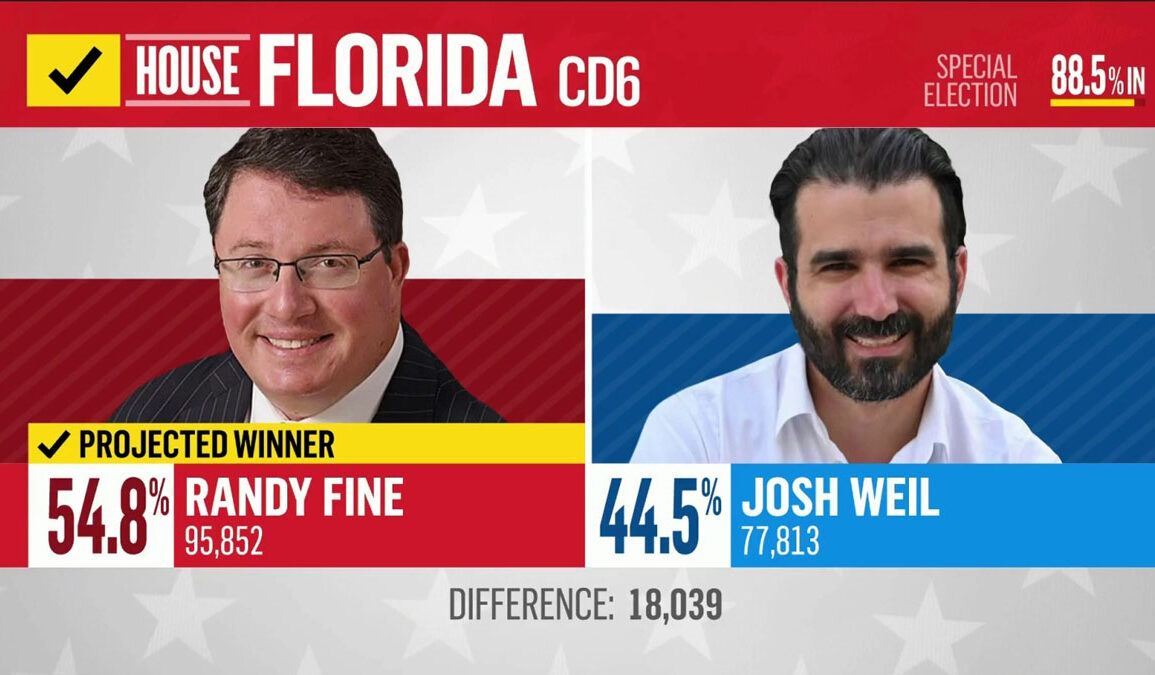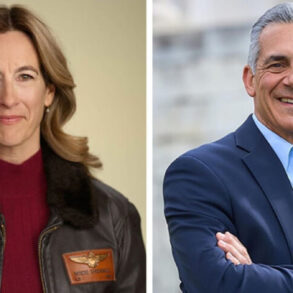The recent elections in Florida and Wisconsin offered a snapshot of America’s political landscape in 2025. With two special congressional elections in Florida and a high-stakes Supreme Court race in Wisconsin, both parties were eager to show strength heading into the next phase of President Donald Trump’s term. The outcomes were split: Republicans held their ground in Florida, while Democrats celebrated a major judicial victory in Wisconsin. But beneath the surface, each race revealed shifting voter behavior, growing concerns over political influence, and signs of possible changes ahead.
Republicans Hold Florida House Seats, but Margins Narrow
In Florida, Republicans secured two wins that were critical for maintaining their slim control of the U.S. House of Representatives. Randy Fine and Jimmy Patronis, both Republicans, won their races to fill the seats left by Mike Waltz and Matt Gaetz. Waltz had stepped down to serve as Trump’s national security advisor, and Gaetz had initially been selected for attorney general but later withdrew from consideration.
These wins brought the GOP’s majority in the House to 220 seats compared to the Democrats’ 213, giving President Trump some breathing room to advance his legislative agenda. Speaker Mike Johnson emphasized the importance of these victories, telling reporters, “We’re not going to lose, and we’re going to have two victories, and that’s what’s important.”
While the wins themselves were expected—both districts are traditionally conservative—what surprised many was how close the races were. In Florida’s 6th Congressional District, Republican Randy Fine defeated Democrat Josh Weil by 14 points. That may sound like a strong victory, but just five months ago, Mike Waltz had won the same district by 33 points.
Similarly, in the 1st Congressional District, where Matt Gaetz had previously won by 32 points, Jimmy Patronis only defeated Democrat Gay Valimont by around 15 points. The tighter margins caught the attention of political leaders on both sides. House Minority Leader Hakeem Jeffries said before the election that Democrats would “significantly overperform,” and the results supported that prediction.
Ken Martin, chair of the Democratic National Committee, noted that these results were encouraging, saying, “I think we’re going to overperform expectations.” He added that these closer-than-expected margins could be an early sign that voters are starting to reconsider their support for Trump’s movement.
President Trump, however, celebrated the wins and dismissed Democratic gains. “Both Florida House seats have been won, big, by the Republican candidate,” he posted on Truth Social. “The Trump endorsement, as always, proved far greater than the Democrats forces of evil. Congratulations to America!”
Still, some conservative voices raised concerns. Charlie Kirk, a right-wing commentator, pointed out that Republican turnout struggles when Trump is not on the ballot. And despite being significantly outspent, Democrats raised more than $10 million in one district alone, Republicans still managed to win, but the performance gap may be a warning for the future.
Wisconsin Supreme Court Race Becomes a National Battle
While Republicans held the line in Florida, Democrats celebrated a major victory in Wisconsin, where liberal judge Susan Crawford defeated conservative Brad Schimel in a Supreme Court race with far-reaching consequences. The outcome keeps the court under liberal control with a 4 to 3 majority, a balance that could determine the future of abortion rights, union protections, voting laws, and congressional redistricting.
Though officially nonpartisan, the race quickly became a referendum on national politics. Former President Barack Obama backed Crawford. President Trump and tech billionaire Elon Musk campaigned heavily for Schimel. Musk’s role drew particular attention. He contributed over $20 million to support Schimel and even traveled to Wisconsin days before the election to hand out two $1 million checks to selected voters. Musk told Fox News, “It’s an extremely tight race. It’s really neck-and-neck.”
Crawford framed her victory as a win for democracy and a rejection of outside influence. In her victory speech, she said, “Growing up in Chippewa Falls, I never could have imagined that I would be taking on the richest man in the world for justice in Wisconsin. And we won.” She added that “Wisconsinites fended off an unprecedented attack on our democracy, our fair elections and our Supreme Court.”
The race shattered spending records, with total contributions likely exceeding $100 million. That made it the most expensive judicial election in U.S. history. Much of the funding came from Musk on the right and major Democratic donors like George Soros and Illinois Governor J.B. Pritzker on the left.
The intense interest in the race came from the court’s potential influence on national elections. The Wisconsin Supreme Court could hear future cases about the 2026 and 2028 elections, including challenges to voting laws and gerrymandering. Trump called the contest “a big race,” and said, “Winning Wisconsin’s a big deal, so therefore the Supreme Court choice … it’s a big race.”
The results showed that voters were paying close attention. Turnout topped 52 percent of the voting-age population, beating the 2023 record of 40 percent. Crawford defeated Schimel by more than eight points.
Schimel conceded the race, even as some of his supporters shouted “cheater” in anger. He responded calmly, saying, “You’ve got to accept the results.”
Musk’s Involvement Sparks Controversy
Musk’s involvement in the Wisconsin race sparked both enthusiasm and criticism. Supporters said his efforts helped raise awareness. Critics said he crossed ethical lines by handing out million-dollar checks during the campaign. Wisconsin’s Attorney General Josh Kaul attempted to block Musk’s giveaways, but the state’s Supreme Court rejected that request before the election.
Some voters said Musk’s influence pushed them toward Crawford. One voter, Jim Hazelton, a 68-year-old veteran, said he hadn’t planned to vote but changed his mind after seeing Musk and Trump get involved. “He’s cutting everything,” Hazelton said of Musk. “People need these things he’s cutting.”
Other voters supported Schimel for more traditional reasons. Taylor Sullivan, an Iraq War veteran, said, “I support the police as much as Schimel does,” and voted for him despite the national spotlight.
Former Minnesota Governor Tim Walz, who was the Democratic vice-presidential nominee in 2024, summed up the mood on the left: “Wisconsin beat the billionaire.”
What This Means Moving Forward
The Florida and Wisconsin results send different messages. Republicans secured their control of the House, but just barely. The shrinking margins in solid red districts may suggest trouble ahead if voter enthusiasm does not increase.
Meanwhile, Democrats scored a symbolic and practical victory in Wisconsin. With the state Supreme Court under liberal control, Democrats can now pursue challenges to Republican redistricting plans and abortion laws. They also see it as proof that voters will reject billionaire-backed efforts to influence local races.
Ken Martin of the Democratic National Committee called the victory a sign of momentum. “Democrats are overperforming, winning races, and building momentum,” he said. “We’re working hard to continue the trend.”
NP Editor: We are thinking this was expected, that Democrats who are pissed off at the Trump victory would show more than than the Republicans who are less concerned because they already won. This is likely the reason that Walz and Gaetz were tapped, because they were both in very safe Republican districts.








